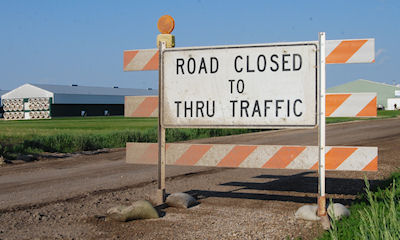November 8, 2015

Most commercial chicken and turkey farms that were infected by avian influenza earlier this year in 15 states have now been cleared to restock their flocks, USDA officials said on Friday. They also said scientists are continuing to keep a close eye on migrating waterfowl this fall, testing thousands of the wild birds to see if the virus is present.
Migrating waterfowl are the main carrier of avian flu, which can spread to commercial poultry farms.

BACK IN BUSINESS: Iowa ag officials have allowed commercial poultry farms affected by the bird flu outbreak earlier this year to bring hens and turkeys back to their operations. Authorities are keeping a close eye on birds for new signs of the disease
In Iowa, where "bird flu" hit hardest this year and resulted in the death of an estimated 32 million egg-laying hens and turkeys, no new cases have been reported since June 17—when the last Iowa farm was confirmed with chickens dying from the H5N2 virus.
However, the migration of wild birds from north to south in the U.S. this fall has been delayed by the warmer than usual weather. State and federal agencies still need about a month of monitoring to assure there are no recurrences, says Iowa Secretary of Agriculture Bill Northey.
Scientists testing migrating wild birds for avian flu virus
Northey and USDA veterinarian Dr. Kevin Petersburg held a press conference Nov. 6. They said samples have been tested from more than 19,000 wild birds across the U.S. so far this fall and plans are to test 38,000 in total. The U.S. government has paid out $200 million to farmers in the U.S. for lost turkeys and egg laying hens and nearly $500 million to farmers and contractors who helped euthanize poultry and disinfect those farms, Petersburg said.
Of the 219 farms nationwide that were affected by bird flu so far this year, all but five of the commercial operations have completed the cleaning and disinfecting of barns and are being allowed to restock their flocks. Turkey farms should be restocked by mid-December but egg farms will continue introducing new hens next year and into 2017.
Bird flu first surfaced on the West Coast in December 2014 and spread to flocks in 15 states over six months, resulting in the death of 48 million chickens and turkeys. Iowa lost the most, nearly 32 million, mostly egg-laying chickens. Minnesota, the leading turkey producing state, lost nearly 9 million birds.
~~~PAGE_BREAK_HERE~~~
Iowa lifts quarantine on poultry farms hit by bird flu
The Iowa Department of Agriculture and USDA announced Nov. 6 that all of the 72 commercial poultry farms in Iowa that had a confirmed case of Highly Pathogenic Avian Influenza or HPAI—the official name of the disease—have now had quarantines on their facilities lifted. The farms are eligible to restock chickens and turkeys.
All sites have completed the cleaning and disinfection process and have undergone environmental tests. Results are negative for the disease. These commercial poultry farms also had to undergo a 21 day fallow period following disinfection before the quarantine could be lifted.
Five backyard poultry operations remain under quarantine in Iowa. Backyard facilities must undergo a 180 day fallow period following depopulation before the quarantines can be lifted and birds brought back to the farm. It is anticipated that these sites will be able to come off of quarantine in the next month, says Northey.
Need for biosecurity continues to be emphasized
Now that fall migration of wild waterfowl is underway, owners of chickens and turkeys are again reminded to exercise biosecurity to prevent the return of the disease, says Petersburg. USDA Animal and Plant Health Inspection Service issued a report last month on its planning and preparation for a potential recurrence of the disease.
APHIS' fall plan focuses on four major areas: preventing or reducing future outbreaks; enhanced preparedness; improved and streamlined response capabilities; and preparing for the potential use of AI vaccines.
APHIS' fall planning report not only discusses planning and preparedness activities but also has links to updated policies, guidance documents, and background information, including a biosecurity self-assessment for the poultry industry. That includes criteria for using ventilation shutdown as a depopulation method and a plan for how vaccine could potentially be used.
The Iowa Department of Agriculture, together with USDA and partner state agencies and industry stakeholders, has conducted after-action reviews and preparedness planning.
About the Author(s)
You May Also Like






